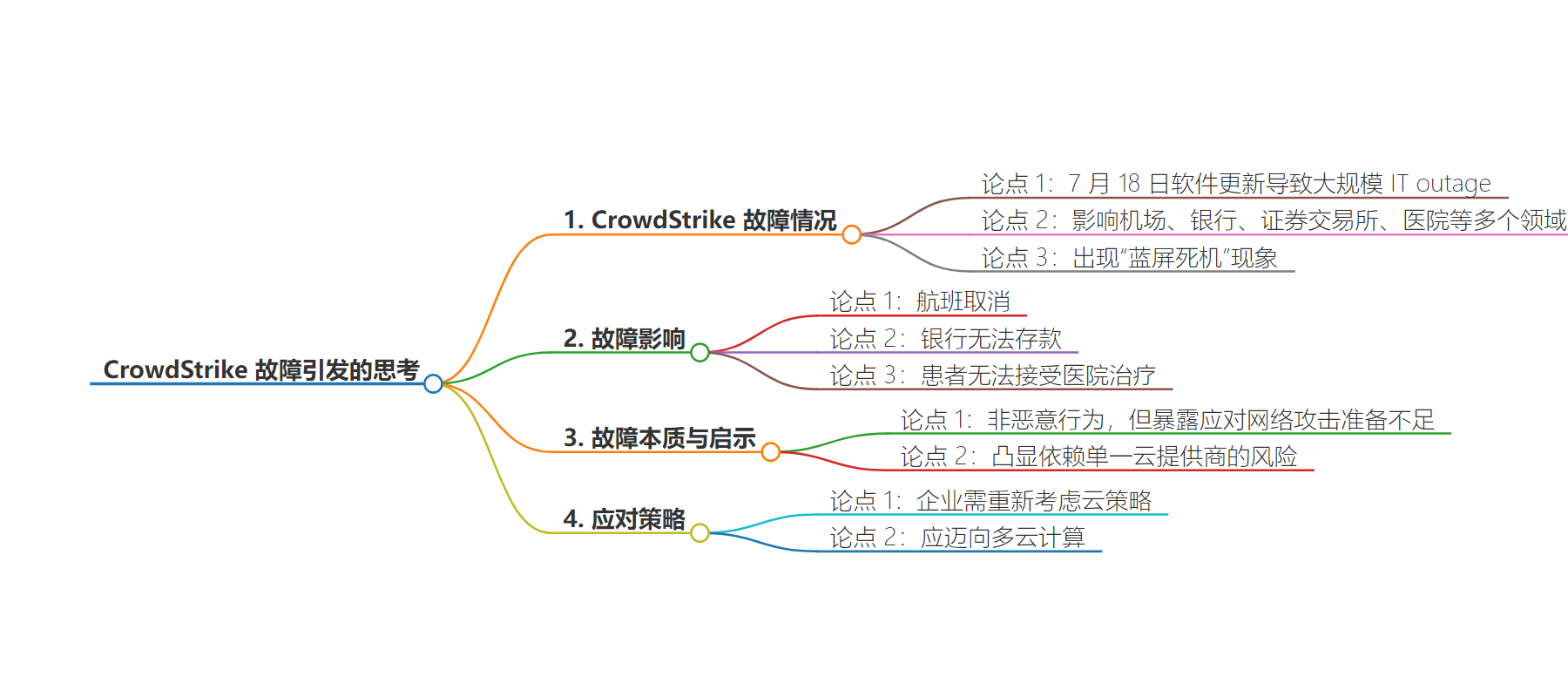包阅导读总结
1.
关键词:Multicloud、CrowdStrike、Outage、Single-provider、Cloud strategies
2.
总结:CrowdStrike 的软件更新导致大规模 IT outage,暴露了依赖单一云提供商的脆弱性,促使企业重新考虑云策略,应走向多云计算。
3.
主要内容:
– CrowdStrike 7 月 18 日的软件更新引发大规模 IT outage。
– 造成机场、银行、证券交易所、医院等诸多领域混乱,出现“蓝屏死机”。
– 此次 outage 虽非恶意行为,但影响严重。
– 航班取消、银行无法存款、患者无法接受医院治疗。
– 该事件凸显单提供商依赖的重大风险。
– 促使企业重新思考云战略。
– 应走向多云计算以避免此类情况再次发生。
思维导图:
文章来源:infoworld.com
作者:InfoWorld
发布时间:2024/7/26 9:30
语言:英文
总字数:1040字
预计阅读时间:5分钟
评分:85分
标签:多云,云计算,IT 弹性,云安全,供应商绑定
以下为原文内容
本内容来源于用户推荐转载,旨在分享知识与观点,如有侵权请联系删除 联系邮箱 media@ilingban.com
A July 18 software update from CrowdStrike caused a massive IT outage, leading to chaos across airports, banks, stock exchanges, hospitals, and more. This incident, marked by widespread occurrences of the “blue screen of death” (BSOD), highlighted the vulnerability of relying on a single cloud provider.
Most of us know someone affected by this outage, although systems are returning to normal as I write this article. Flights were canceled, banks could not make deposits, and patients could not get hospital treatment. That’s scary post-apocalypse stuff. This outage was not the result of a malicious act, but it proves we’re not ready to face a substantial cyberattack and the far-reaching damage it could cause.
The disruption of services worldwide showcased the significant risk of single-provider dependency and underscored the crucial need for enterprises to reconsider their cloud strategies. Namely, how can we make sure this doesn’t happen again? It’s the most common question I’m receiving right now, and it’s easy to answer: It’s time to move toward multicloud computing.
